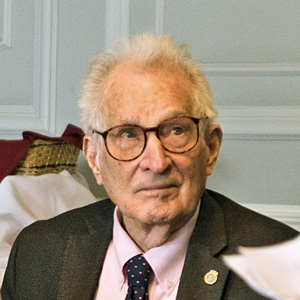
Ken Ford, 2016, age 90
Details of Ken Ford’s life, career, and writing can be found at kennethwford.com. He taught and did research on theoretical nuclear physics at several universities. He wrote Basic Physics—which provides the source material for these essays—while serving as the first chair of the physics department at UC Irvine. Ken later served as a college president and as director of the American Institute of Physics, and after retirement taught high-school physics. In 2006 he was awarded the Oersted Medal for his contributions to physics teaching.
Some of Ken’s published books:
The Quantum World: Quantum Physics for Everyone (Harvard University Press, 2004)
In Love With Flying (H Bar Press, 2007)
101 Quantum Questions: What You Need to Know About the World You Can’t See (Harvard University Press, 2011)
Building the H Bomb: A Personal History (World Scientific, 2015)
Basic Physics: A Resource for Physics Teachers (World Scientific, 2016) (For information on the Basic Physics Answer Manual, click here.)
